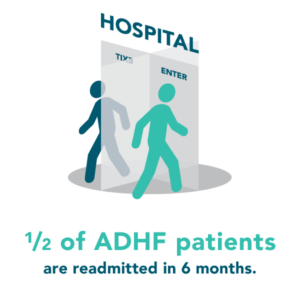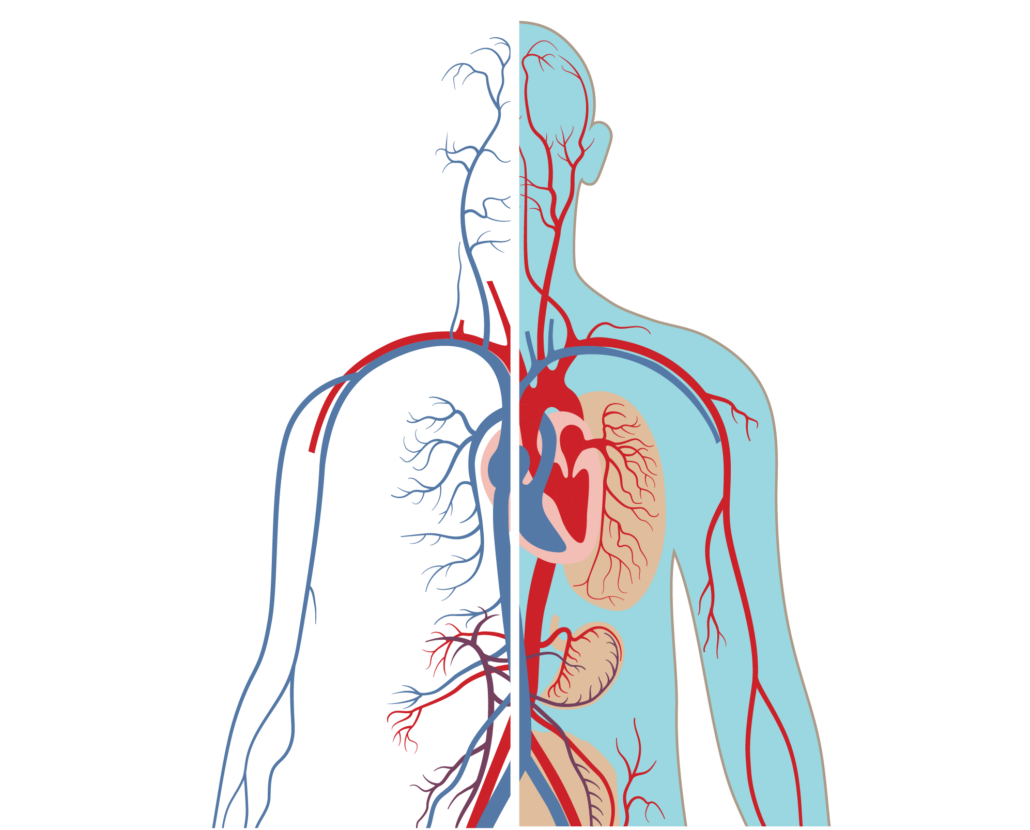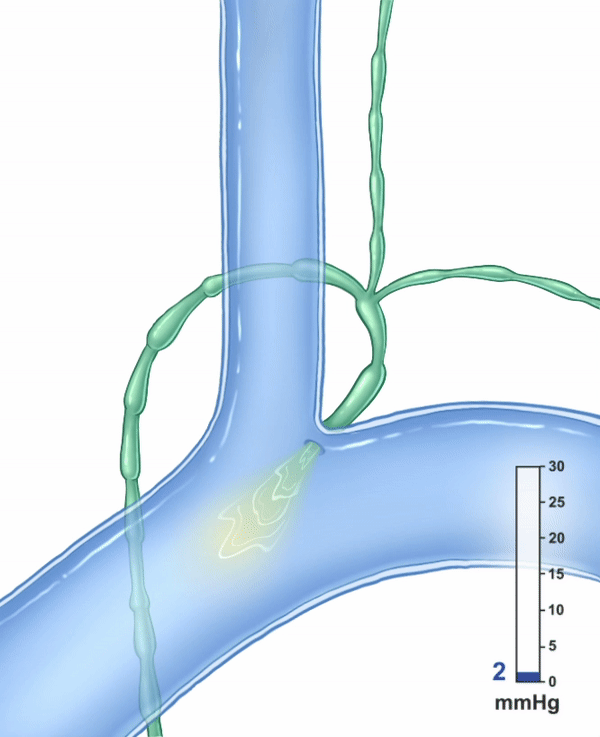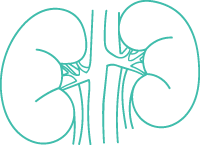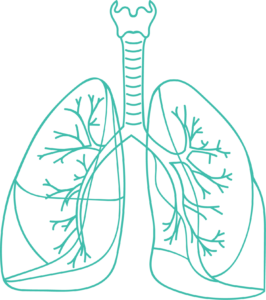Tissue Congestion
Each year millions of patients are hospitalized with worsening heart failure symptoms.8 Patients with ADHF experience difficulty breathing, fatigue, and edema (swelling) caused by a buildup of excess fluid. This buildup of excess fluid, also called tissue congestion, contributes to organ dysfunction and poor outcomes.9

